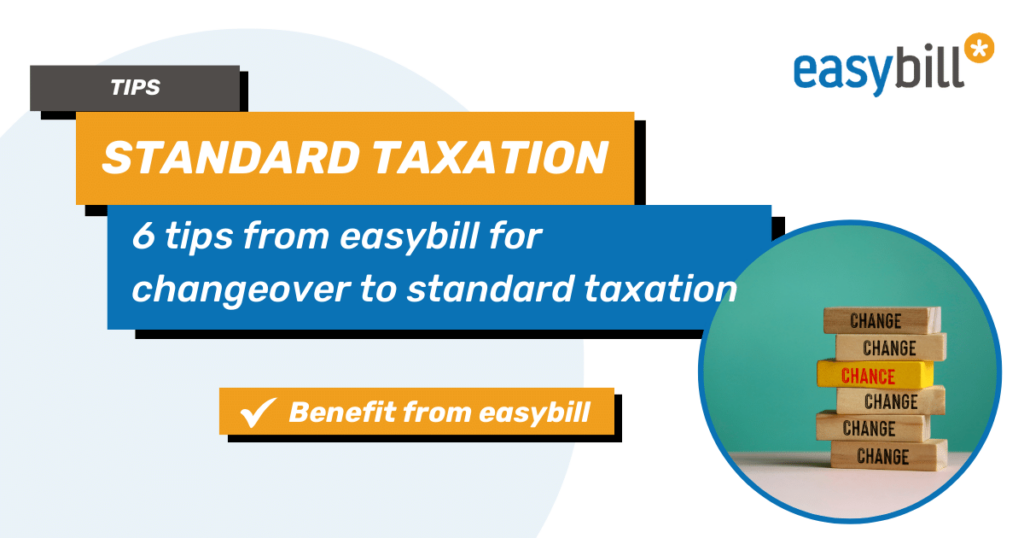
The switch to standard taxation can represent a significant change for companies. It’s a step that needs to be carefully planned and implemented to ensure tax compliance and financial stability.
In this blog post, we give you six valuable tips to help you make this transition smoothly.
Table of content
- thorough preparation is the key
- seek professional advice
- implement efficient invoicing software
- do not neglect liquidity planning
- conduct training for employees
- regular review and adjustment
- Conclusion
1. Thorough preparation is the key
Thorough preparation is essential before you embark on the path to standard taxation. Carefully review all relevant documents, balance sheets and transactions.
A precise knowledge of your financial situation will enable you to identify and eliminate potential tax pitfalls at an early stage.
2. Seek professional advice
Switching to standard taxation is no easy task and often requires specialist knowledge of tax law. It is therefore advisable to seek professional advice from tax experts or accountants.
They can not only help you with planning, but also ensure that you make the most of all tax advantages.
3. Implementation of efficient invoicing software
Efficient invoicing software should be at the top of your to-do list to meet the requirements of standard taxation. Make sure that your invoicing software captures all relevant information correctly and that your employees are properly trained to meet the new requirements. This not only makes it easier to comply with tax regulations, but also optimizes your internal processes.
easybill invoice software can be converted to standard taxation for small businesses with just a few clicks. Your previous tax-exempt invoices remain available. New invoices with correct tax statements are added. This means you have full access to all your documents at all times.
4. Do not neglect liquidity planning
Die Umstellung auf Regelbesteuerung kann sich auf Ihre Liquidität auswirken. Berücksichtigen Sie dies bei Ihrer Finanzplanung und stellen Sie sicher, dass Sie über ausreichende finanzielle Ressourcen verfügen, um etwaige steuerliche Verpflichtungen zu erfüllen.
Eine gut durchdachte Liquiditätsplanung ist entscheidend, um finanzielle Engpässe zu vermeiden.
5. Conduct training for employees
The changeover to standard taxation not only affects the finance department, but often the entire company. Provide training for all relevant employees to ensure that they understand the new tax requirements and can implement them correctly. This minimizes the risk of errors and contributes to a smooth transition.
6. Regular review and adjustment
Tax regulations can change and your company will evolve over time. It is therefore important to regularly review the implementation of standard taxation and make adjustments where necessary.
Stay informed about current developments in tax law and adapt your processes accordingly to minimize tax risks.
Conclusion
Switching to standard taxation may be a challenge, but with careful planning, professional advice and the right preparation, businesses can successfully manage this step. Use the tips above to ensure that your company is well positioned for tax and meets the new requirements.
Read also:
Free onboarding webinars in the easybill service package
Tax changes in 2024
Change from small business to standard taxation
